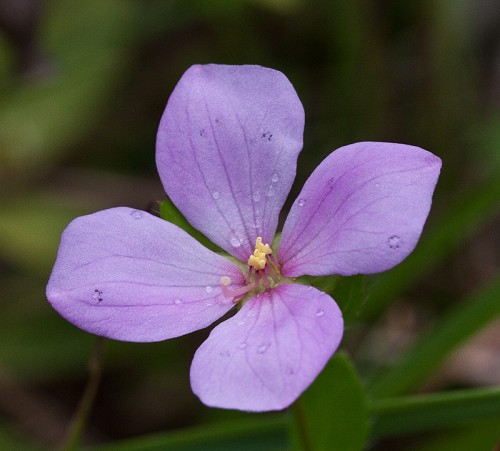Difference between revisions of "Rhexia petiolata"
| Line 45: | Line 45: | ||
<!--==Diseases and parasites==--> | <!--==Diseases and parasites==--> | ||
| − | ==Conservation and | + | ==Conservation, cultivation, and restoration== |
| − | == | + | ==Cultural use== |
==Photo Gallery== | ==Photo Gallery== | ||
<gallery widths=180px> | <gallery widths=180px> | ||
</gallery> | </gallery> | ||
==References and notes== | ==References and notes== | ||
Revision as of 18:30, 8 June 2021
Common name: ciliate meadow-beauty [1], short-stemmed meadow-beauty [1], fringed meadowbeauty [2]
| Rhexia petiolata | |
|---|---|

| |
| Photo by John Gwaltney hosted at Southeastern Flora.com | |
| Scientific classification | |
| Kingdom: | Plantae |
| Division: | Magnoliophyta - Flowering plants |
| Class: | Magnoliopsida - Dicots |
| Order: | Myrtales |
| Family: | Melastomataceae |
| Genus: | Rhexia |
| Species: | R. petiolata |
| Binomial name | |
| Rhexia petiolatas Walter | |

| |
| Natural range of Rhexia petiolata from USDA NRCS Plants Database. | |
Contents
Taxonomic Notes
Synonyms: R. ciliosa Michaux
Varieties: none
Description
R. petiolata is a perennial forb/herb of the Melastomataceae family native to North America.[2]
Distribution
R. petiolata is found along the southeastern coast of the United States from Texas to Maryland.[2]
Ecology
Habitat
R. petiolata proliferates in wet pine flatwoods and savannas, pocosin borders, and ditches.[1] R. petiolata responds positively to soil disturbance by heavy silvilculture in North Carolina.[3] It does not respond to soil disturbance by clearcutting and chopping in North Florida flatwoods forests.[4]
Rhexia petiolata is an indicator species for the Panhandle Seepage Savannas community type as described in Carr et al. (2010).[5]
Phenology
R. petiolata has been observed to flower June through October.[6]
Conservation, cultivation, and restoration
Cultural use
Photo Gallery
References and notes
- ↑ 1.0 1.1 1.2 Weakley, A. S. (2015). Flora of the Southern and Mid-Atlantic States. Chapel Hill, NC, University of North Carolina Herbarium.
- ↑ 2.0 2.1 2.2 USDA Plant Database https://plants.usda.gov/core/profile?symbol=RHPE
- ↑ Cohen, S., R. Braham, and F. Sanchez. (2004). Seed Bank Viability in Disturbed Longleaf Pine Sites. Restoration Ecology 12(4):503-515.
- ↑ Moore, W.H., B.F. Swindel, and W.S. Terry. (1982). Vegetative Response to Clearcutting and Chopping in a North Florida Flatwoods Forest. Journal of Range Management 35(2):214-218.
- ↑ Carr, S.C., K.M. Robertson, and R.K. Peet. 2010. A vegetation classification of fire-dependent pinelands of Florida. Castanea 75:153-189.
- ↑ Nelson, G. PanFlora: Plant data for the eastern United States with emphasis on the Southeastern Coastal Plains, Florida, and the Florida Panhandle. www.gilnelson.com/PanFlora/ Accessed: 29 MAY 2018